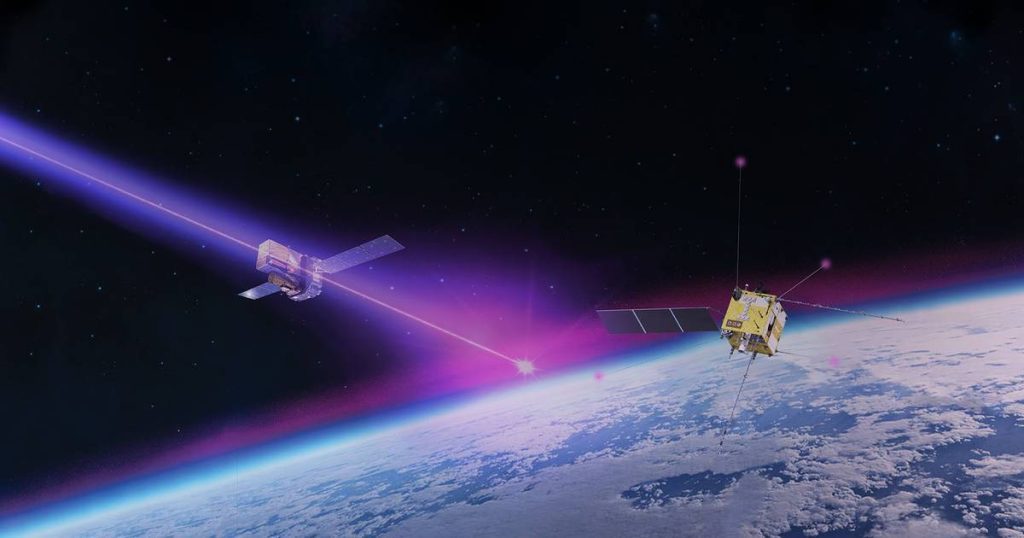A huge gamma-ray burst, discovered by the European Space Agency’s Integrated Space Telescope, will hit our Earth in 2022. Scientists announced this in New Publication. Gamma rays even caused significant disruption to our planet’s ionosphere. Such perturbations are usually associated with our Sun, but this was the result of the explosion of a star about two billion light-years away. Analyzing the effects of the explosion can teach us more about the mass extinctions that have occurred in Earth’s history.
A huge burst of gamma radiation, the so-called gamma-ray burst, hit our Earth. This actually happened in 2022 on October 9 at 3:21 p.m., and was observed by the European Space Agency’s space telescope, the International Laboratory for Gamma-ray Astrophysics (Integral), among others. Gamma-ray bursts have been detected since 2002. But GRB 221009A was not just an ordinary gamma-ray burst. “This was probably the brightest gamma-ray burst we have ever observed,” says Mirko Piersanti, of the University of L’Aquila. The gamma ray burst caused a major disturbance in our planet’s ionosphere.
What is a gamma burst?
Gamma bursts were once mysterious events. However, scientists discovered that it is the energy released in the form of gamma rays from the explosion of stars, supernovas, or the collision of two neutron stars.
“We have been measuring gamma-ray bursts since the 1960s, and this is the most powerful explosion ever measured,” says Pietro Ubertini of the National Institute of Astrophysics in Rome. GRB 221009A is ten times more powerful than the previous largest gamma-ray burst ever recorded. Statistically speaking, GRBs of this strength only reach Earth once every 10,000 years.
During the 800 seconds that the gamma rays hit the Earth, the gamma-ray burst provided enough energy to activate lightning detectors in India. Instruments in Germany also picked up signals that the Earth’s ionosphere had been disrupted for several hours. This huge amount of energy gave a team of scientists the idea to detect the effects of the explosion on the Earth’s ionosphere.
What is the ionosphere?
The ionosphere is the layer of Earth’s upper atmosphere that contains electrically charged gases called plasma. Its height extends from about 50 km to 950 km. Scientists usually divide the ionosphere into two layers above and below 350 km.
Scientists realized that if the gamma-ray burst had caused the disturbance, China’s Electromagnetic Seismic Satellite (CSES) must have detected it. This Sino-Italian space mission has been monitoring the upper part of the ionosphere for changes in electromagnetic behavior since 2018. This is to find out the relationship between changes in the ionosphere and seismic events such as earthquakes, but also to see the influence of our Sun’s activity on the ionosphere. “We actually looked at other gamma-ray bursts in the past to see if the Outer Space Center had spotted anything, but it didn’t see anything,” Pietro says.
But when scientists looked this time, they had better luck. They saw a clear and strong signal. For the first time ever, they observed severe turbulence in the ionosphere. “This is fantastic. Now we have observed something happening somewhere far out in deep space, but it is also affecting Earth,” says ESA project scientist Eric Kolkers.
Read more below the picture

This particular gamma-ray burst originated in a galaxy about 2 billion light-years away — that’s 2 billion years ago — and still has enough energy to reach Earth and impact our ionosphere. Although the Sun is usually the primary source of radiation powerful enough to affect the Earth’s ionosphere, these gamma-ray burst devices are typically intended to study massive explosions in the Sun’s atmosphere known as solar flares. “This disturbance particularly affected the lower layers of the Earth’s ionosphere, which are only tens of kilometers above the Earth’s surface, leaving a signature similar to that of a large solar flare,” said Laura Hayes, co-researcher and solar physicist at the European Space Agency.
This discovery reinforces the idea that a supernova in our galaxy could have far more serious consequences than initially thought. “Until now, there has been a lot of discussion about the possible consequences of a gamma-ray burst in our galaxy,” Mirko says. In the worst case, such a gamma-ray burst would not only damage the ionosphere but also the ozone layer, allowing dangerous ultraviolet rays from the Sun to suddenly reach the Earth’s surface. It is expected that such an effect could be a possible cause of some mass extinction events in the past. But to explore this idea, we need more data.
look. The astronaut allows the bag to fly during a space walk and you can even spot it using regular binoculars
Belgium has the beautiful northern lights: will they be back soon? Why are our aurora borealis usually red? How can you tell? (+)
SpaceX hopes to launch Starship this week: ‘Second test possible from Friday if we get permission’
Free unlimited access to Showbytes? Which can!
Log in or create an account and never miss a thing from the stars.

“Coffee buff. Twitter fanatic. Tv practitioner. Social media advocate. Pop culture ninja.”











More Stories
Which can cause an increase in nitrogen.
The Central State Real Estate Agency has no additional space to accommodate Ukrainians.
The oystercatcher, the “unlucky national bird,” is increasingly breeding on rooftops.